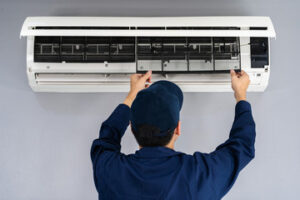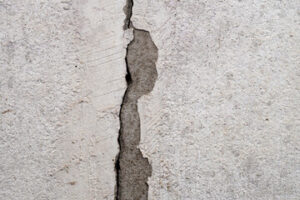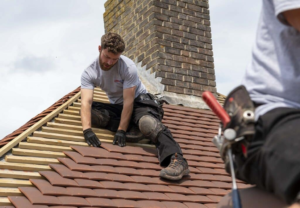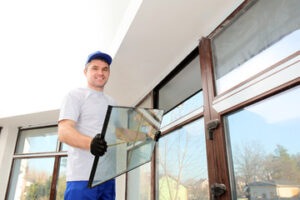Roofing Company Riverview specializes in new roof installation, re-roofing, repair, inspections and maintenance. They also offer warranties and workmanship.
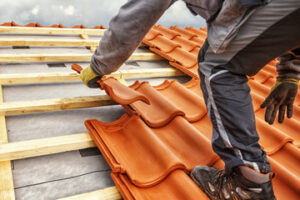
It’s important to have a detailed contract that includes the work description, materials, cost and schedule. This minimizes misinterpretation and misunderstandings. It should also include any warranties included with the project.
Depending on state and local regulations, some roofing contractors must be licensed. This ensures that they are properly trained and qualified to handle any roof repair or replacement project. Licensing requirements typically include a written exam, as well as training courses and in-person coursework. Some states also require continuing education classes to keep up with new laws, regulations, and techniques in the roofing industry.
There are several reasons why a roofing company should be licensed, including the safety of those who work on the roof. Roofing is a dangerous job, with many potential risks like falls from heights and injuries from tools. Without proper training and licensing, these hazards could lead to a serious accident that could damage your property or injure you and others. Licensing also helps ensure that roofing companies follow strict safety protocols and are knowledgeable about local building codes and regulations.
Hiring a roofing contractor that is licensed can save you time and money. Not only do licensed roofing contractors follow all applicable safety protocols, they also have access to the latest tools and materials needed to complete any project efficiently. Additionally, you can rest assured that they are a legitimate business with a solid reputation.
In addition to being licensed, a good roofing company will also carry the necessary insurances. This includes liability insurance that protects homeowners from any accidents or damages that may occur during roof repairs and replacement. Workers’ compensation is also often required, which provides protection for employees in case of injury or death on the job.
If you are looking for a roofing company, it is important to interview multiple contractors and request detailed quotes before making a decision. It is also a good idea to visit past projects to see the quality of their workmanship firsthand. Lastly, ask about manufacturer certifications and make sure they have the appropriate accreditations to offer better warranties and guarantees.
Getting started with a roofing company requires a lot of hard work and dedication. There are many factors to consider, such as the need for a specific skill set, the availability of labor, and the ability to meet financial goals. However, with the right preparation and planning, you can be on your way to starting your very own successful roofing company.
Insurance
As a homeowner, it is vital to make sure that any roofing contractors you hire are properly insured. If something goes wrong during a job, and you hire an uninsured roofer, it could cost you big time. Luckily, there are several types of insurance that reputable roofing companies should have in place. These include general liability insurance, worker’s compensation insurance, commercial auto insurance, builder’s risk insurance, and umbrella insurance.
Contractors Liability Insurance provides coverage for third-party bodily injuries and property damage caused by a roofing contractor’s work or advertising. It is a must-have for New York roofing companies, where damages can easily escalate due to the dense urban environment. It may also be beneficial to purchase contractors pollution liability insurance, which will provide coverage for environmental damage to your clients’ properties. For example, the sealants, adhesives, coatings, and other products used by roofing contractors to spray or apply a roof are toxic if inhaled by employees or homeowners. Contractors Pollution Liability will cover Bodily Injury or Property Damage claims related to the discharge, dispersal, seepage, migration, release, or escape of a pollutant, and can be extended to include Professional Liability and Property damage.
Inland marine insurance is a must for roofing contractors who need to transport equipment and materials to the job site or storage facility. It covers the loss of a vehicle or equipment due to fire, theft, vandalism, and weather-related perils, as well as damage to goods in transit. For instance, a severe storm can destroy a company vehicle and its valuable contents inside. If the vehicle is covered by inland marine, you will be reimbursed for the costs of replacing the damaged items.
Workers’ compensation insurance is a must for all roofing contractors, regardless of whether they are sole proprietors or employers. It covers medical treatment and lost wages if an employee is injured on the job. Depending on your state’s requirements, it may be mandatory to carry this coverage. Additionally, you should purchase business auto insurance to cover any vehicles your roofing company uses for its operations. It is important to note that personal auto policies typically do not provide coverage for vehicles that are used for business purposes.
Workmanship
While roofing materials are the core component of a roof, the installation process is also very important. That’s why it’s critical to choose a contractor that offers a workmanship warranty. Workmanship warranties protect homeowners from problems that occur due to installer errors. They generally last for two to ten years and cover the costs of labor and materials. Homeowners should pay attention to the coverage details and exclusions of a workmanship warranty.
Ideally, a roofing company should offer both workmanship and manufacturer material warranties. However, some companies only provide one type of warranty or have limited durations. It’s important to find a company that offers both, as they will cover more of your investment in case something goes wrong.
When evaluating roofing companies, homeowners should look for online reviews and testimonials. This information can help them gauge a contractor’s professionalism and quality of work. They should also consider asking the contractors for detailed quotes and visiting past projects. In addition, homeowners should check whether the roofing company is certified by any manufacturers. Manufacturer certifications indicate that the roofing company meets specific criteria and may offer better warranties and workmanship.
Another consideration is the roofing company’s ability to meet project timelines. Often, weather-related issues cause delays, but a reliable contractor can minimize these setbacks with careful planning. For example, choosing a contractor that works during the summer and fall when weather conditions are favorable can reduce construction times.
Finally, homeowners should make sure the roofing company has a history of quality work and excellent customer service. They should ask the contractor about their processes, policies, and procedures for dealing with challenges that arise during a project. This will help ensure that the contractor is able to resolve issues in a timely manner and still meet their deadlines.
Choosing the right roofing company is a big decision that can impact your home’s value and comfort. To avoid making a mistake, homeowners should do their research and take the time to evaluate multiple contractors. By following the tips in this article, they can find a trustworthy and experienced roofing contractor to protect their home for years to come.
Warranty
A roofing warranty is an important investment for homeowners. It protects against unexpected issues or defects that may arise during the installation process. However, not all warranties are created equal. Homeowners should evaluate different options and carefully read their contract to understand the coverage they are receiving.
Manufacturer warranties usually cover material defects for a specified period of time, but do not include labor costs. A homeowner can choose between a material-only or a full coverage warranty, but the latter option is typically more expensive. Some manufacturers offer extended warranties of up to 50 years, and even a lifetime warranty on certain materials.
Homeowners should also look for a workmanship warranty, which covers the cost of labor and installation errors. This type of warranty is typically included in a comprehensive roof system, but can be separate as well. A good contractor will provide a workmanship warranty that matches or exceeds the manufacturer’s warranty.
When choosing a roofing company, it is important to understand the different types of roofing warranties and their key terms. This will help you decide what type of roofing warranty is best for your needs and protect your investment. Manufacturers and contractors offer a variety of warranties, and some of them are even transferable to future homeowners.
The most common types of roofing warranties are manufacturer and contractor warranties. The former covers materials, such as shingles or tiles, while the latter covers workmanship. Most of these warranties have specific requirements for homeowners, such as using only authorized contractors and maintaining a regular maintenance schedule.
Roofing warranties can help homeowners save money and avoid costly repairs in the future, but they are not a foolproof way to protect against problems. These warranties are not guaranteed to protect against any issues that can be caused by the weather or improper installation. Moreover, they do not cover the replacement costs of any other roof components, such as flashing or shingle boards.
Before selecting a roofing contractor, you should check the contractor’s website for a detailed description of the warranty coverage. It should clearly outline the terms of the warranty, including how long it lasts, what issues are covered, and the procedures for filing a claim. Moreover, the warranty should clearly specify if any alterations or repairs are excluded. Moreover, a good roofing company will always keep records of all work performed on your roof and any claims that have been filed against the warranty.
